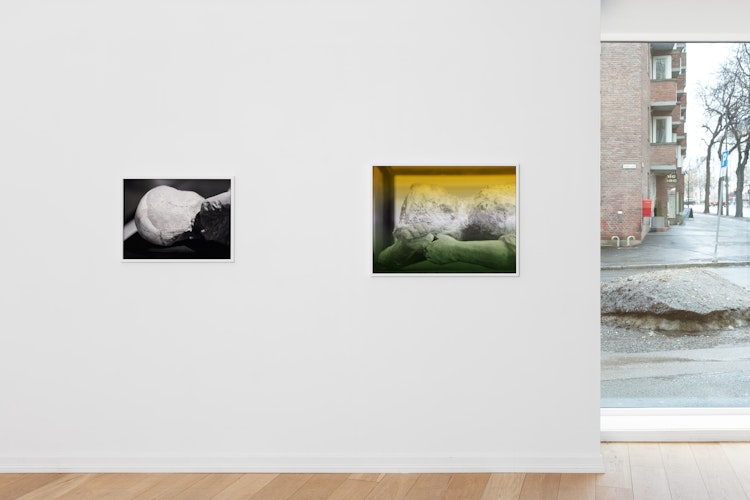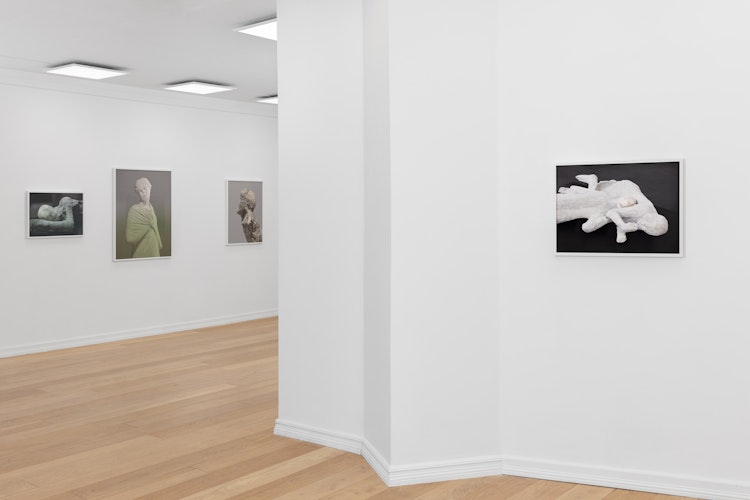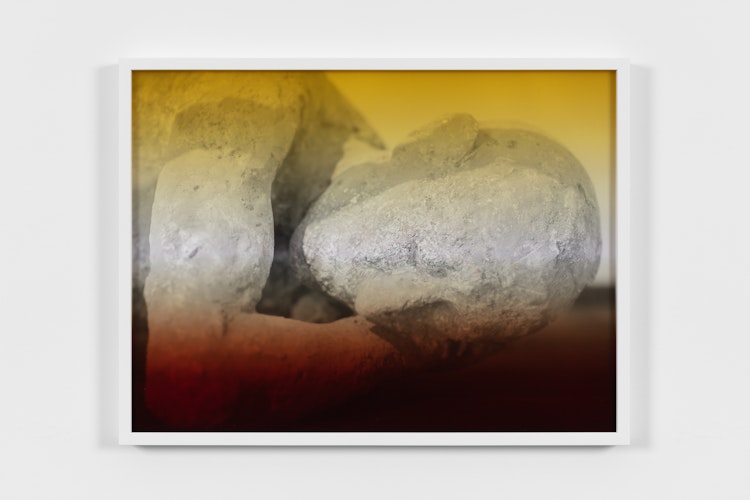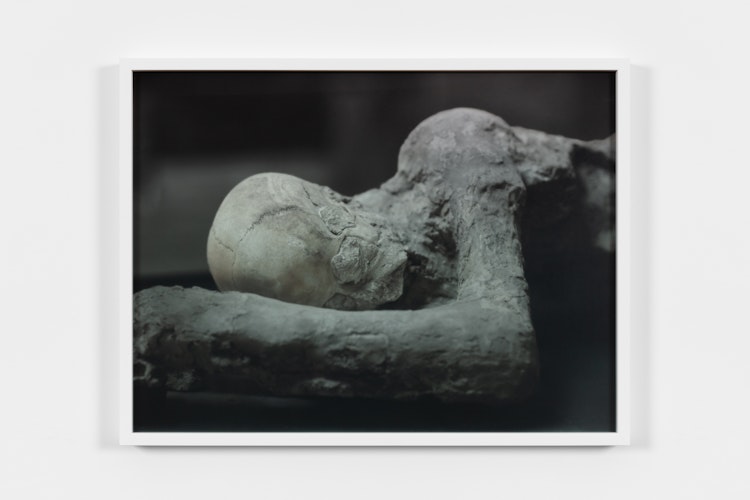On the Whispering Wind


The exhibition opens Thursday 23rd of March from 6 - 8 pm.
Over the past decade, Espen Gleditsch's artistic practice has dealt with how historical meaning is constructed and perceived. The show On the Whispering Wind, consisting of a new body of photographic work, continues this exploration, highlighting the complex relationship between facts, coincidence, and interpretation.
The photographs in the exhibition are from the Roman city of Pompeii, buried by volcanic ash in 79 AD. About 2,000 of its inhabitants became victims of the eruption from Vesuvius. During excavations in the 18th century, archaeologists discovered mysterious cavities below the layers of ash and soil. During a decade of excavations, these pockets remained an enigma, until attempts were made to fill the cavities with plaster. As the plaster hardened and the surrounding ash was removed, full-scale negative casts emerged of bodies frozen in time, facing their inevitable tragedy. The matte, coarse plaster casts give shape to the bodies encased by the ash nearly two millennia ago.
The enigmatic plaster casts defy categorization. They have been made during the last 150 years, but from moulds shaped 2.000 years ago. Are they antique or modern, made by man or of nature? Does it make sense to describe them as sculptures, or are they something else altogether? Among other things, Gleditsch's photographs deal with ephemerality, and the moral implications of photographing a 2,000-year-old direct impression of lived life, as opposed to making an image of a marble sculpture.
A recurring feature of Gleditsch's artistic production is the emphasis on how unintentional shifts in meaning affect the dissemination of historical events, and this exhibition is no exception. A brownish-red colour dominate the walls of Pompeii. It is perhaps the single most iconic colour of antiquity. During the 18th and 19th centuries, Pompeian red became a fashionable symbol in culturally well-to-do homes in Northern Europe. Countless living rooms got painted in this colour that simultaneously signified good taste, a familiarity with antiquity and the new science of archaeology. However, recent research has cast doubt on whether the walls of Pompeii were not red but yellow. Through exposure to the hot gas from the volcano, the pigment may have been baked and changed colour from yellow ocher to red.
As with the plaster casts, Gleditsch reads this elusive colour as a hybrid between a chemical and a social construction – a phenomenon at the intersection between being made by man and of nature. The colours from the ruin city manifest as ambivalent historical membranes through which the photographs are viewed. In On the Whispering Wind, Gleditsch juxtaposes the plaster casts and the colours as two unintentional phenomena conjured up by the ash.
The exhibition is made with generous support from Arts Council Norway and the Norwegian Visual Artists Fund (BKV).



























What are you looking for?